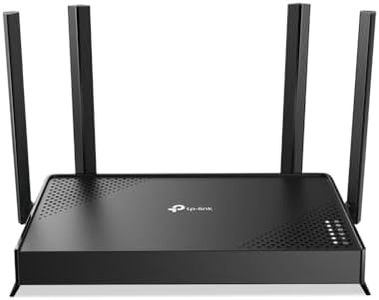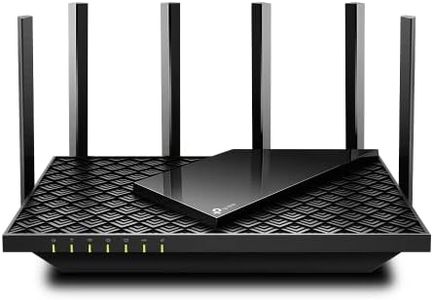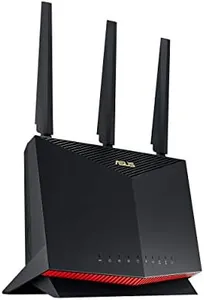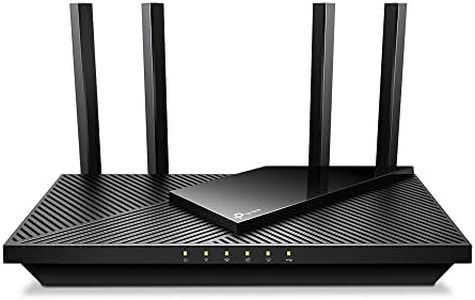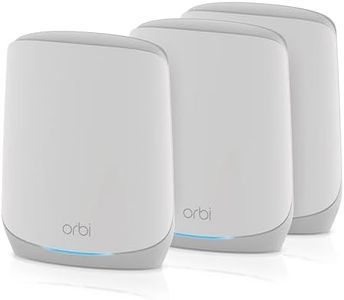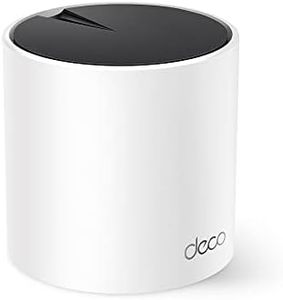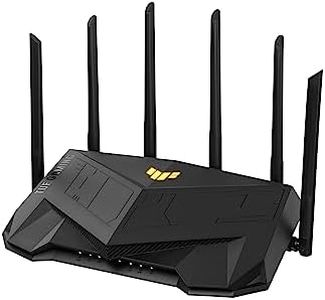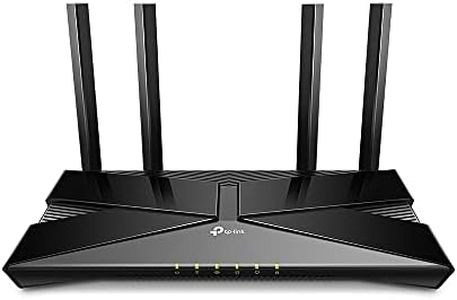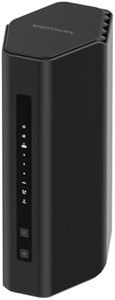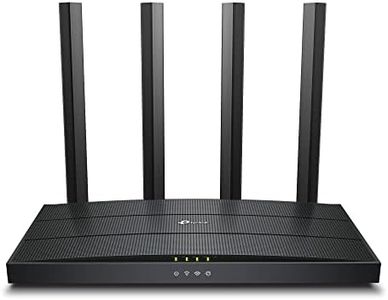We Use CookiesWe use cookies to enhance the security, performance,
functionality and for analytical and promotional activities. By continuing to browse this site you
are agreeing to our privacy policy
10 Best Gigabit Routers
From leading brands and best sellers available on the web.By clicking on a link to a third party's website, log data is shared with that third party.
Buying Guide for the Best Gigabit Routers
When choosing a gigabit router, it's important to focus on how you use your internet and what you expect in terms of speed, reliability, and additional features. The right router can make a noticeable difference in your online experience, whether you’re streaming videos, gaming, working from home, or simply browsing the web. By understanding the key specifications, you'll be better equipped to find a router that fits your needs and ensures smooth internet for all your devices.Wi-Fi StandardThe Wi-Fi standard tells you what generation of wireless technology the router uses, such as Wi-Fi 5 (802.11ac) or Wi-Fi 6 (802.11ax). This is important because newer standards usually deliver faster speeds, handle more devices, and provide better performance in crowded areas. Wi-Fi 5 is commonly found and suitable for most home uses, while Wi-Fi 6 is ideal if you have many devices or want the latest technology. You should choose a standard that matches the devices you have at home—if most of your gadgets are new, go for Wi-Fi 6; for older devices, Wi-Fi 5 is usually sufficient.
LAN/WAN Ports and SpeedGigabit routers typically have Ethernet ports that support speeds up to 1,000 Mbps (1 Gbps), which is much faster than older routers. The number of LAN (local area network) ports tells you how many wired connections you can make; more ports are useful if you have several devices like PCs or gaming consoles. Make sure both the WAN (wide area network) port and LAN ports offer gigabit speeds to get the full benefit of a fast internet plan. Pick a router with enough gigabit ports for your wired devices to avoid using extra switches.
Dual-Band or Tri-BandRouters can broadcast on two or three frequency bands, such as 2.4GHz and 5GHz. Dual-band routers let you split up your devices for less interference—2.4GHz for simple browsing, 5GHz for faster speeds. Tri-band routers add an extra 5GHz band, which can benefit homes with many devices or heavy users by spreading the traffic even more. If your household has a lot of connected gadgets or people using the internet intensively at the same time, tri-band is a solid choice; for everyday use, dual-band is usually enough.
Wireless SpeedThe wireless speed is usually advertised as AC1200, AX1800, and so on. This figure is a sum of all theoretical speeds across all bands; however, in real life, actual speeds will be lower. More speed is better for 4K streaming, large downloads, and gaming. If you have a very fast internet service or many users, higher-rated routers can help ensure smoother connections. For regular web browsing and video watching, even lower-rated models are often sufficient.
Coverage AreaCoverage area tells you how much physical space the router can handle—think about the size of your home and the placement of the router. Larger homes or homes with thick walls may need a router with stronger coverage or mesh support to reach every room. The best fit depends on your space: a small apartment can manage with basic coverage, whereas larger houses with more floors might need extended or mesh systems.
Parental Controls and Security FeaturesSome routers include features like parental controls, guest networks, firewalls, or automatic updates. These features can keep your network safe, allow you to manage internet access for children, or keep guests separate from your main network. If you have kids, frequent guests, or just want improved peace of mind, prioritize these features when choosing your router.
